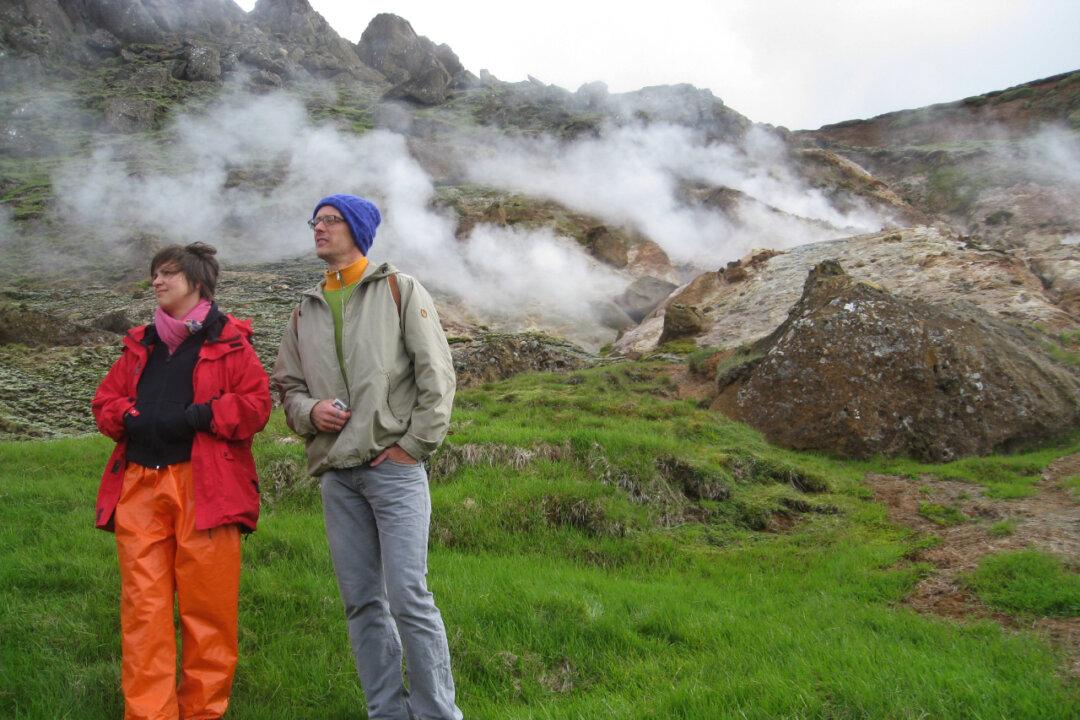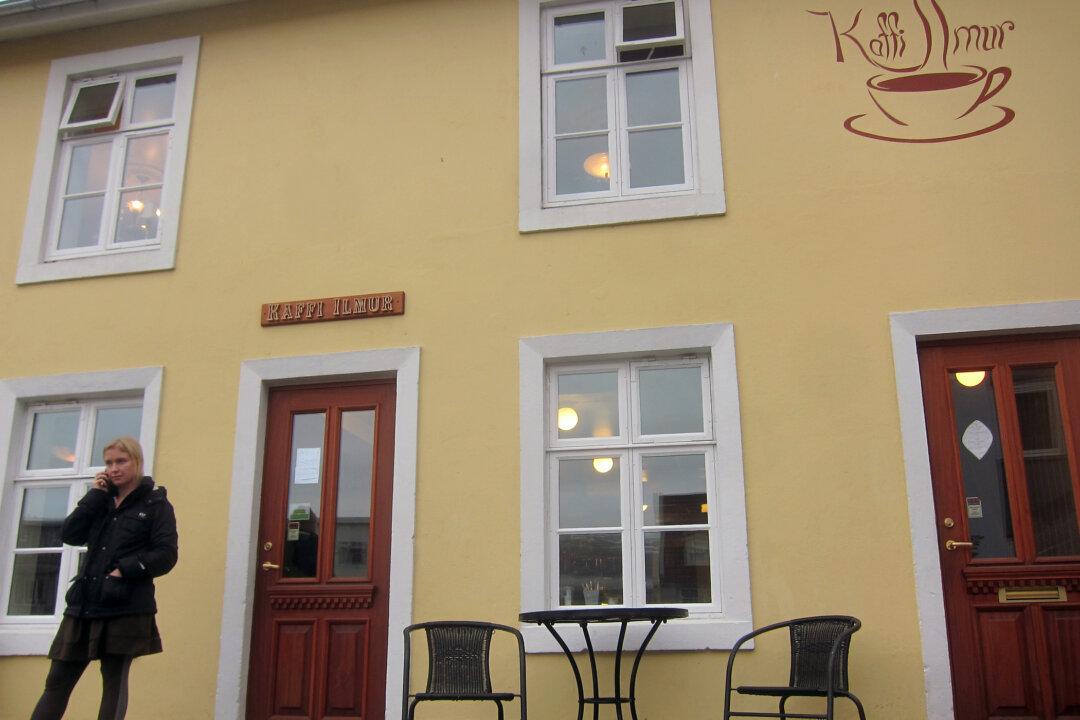Iceland epitomizes mental and physical prowess.
This island country has existed on earth for millennia, but it was chess master Bobby Fischer who put it on the map, so to speak, in 1972, when he defeated Russian Grandmaster Boris Spassky for the World Chess Championship in the capital city of Reykjavik. He was the first American to win this prestigious title.
It was a victory for the U.S. that matched the extraordinary, winning topography of Iceland’s volcanoes, geothermal springs, rivers, glaciers, and vast treeless terrain.
As a matter of fact, NASA astronauts trained here south of Reykjavik in the mid-1960s for America’s first moon landing. Iceland’s landscape is out of this world.
During the hippie era of the 1960s, Icelandic Airlines was the popular choice to fly to Europe with a refueling stop in Reykjavik.
Touring the Countryside
On a recent visit there, I drove southeast from Reykjavik with a group of extreme outdoor enthusiasts to climb Hvannadalshnúkur, the country’s highest peak (6,922 feet).
I took the road less traveled, that is, the one less extreme. Instead of hiking the 15 hours up and down, I poked around at sea level nearby Skaftafell National Park, taking in the Skógarfoss waterfalls and walking on a glacier with crampons and a trusty ice-axe.
During the summer months it stays light nearly 24-hours in Iceland.
Glacier walking is my kind of sport—slow and easy. The June day was sunny and crispy; the air was clean and easy to breathe. I was in heaven. The others were in ultra-heaven.
Twenty-five year old guide Agust Gunnlaugsson (you try to say it) said there are no particular skills in walking a glacier, other than keeping your balance on crampons.
“The beauty of the glacier is that it changes all the time. Each day is different—different textures of surface. The black dirt gets washed by the rain and looks clean and beautiful again,” said the young guide who graciously obliged the tourists’ photo opportunity requests.
I couldn’t help but feel small—maybe insignificant—for those three hours, surrounded by the mountains, walking up, down, and sideways over crevices, using the axe for support. The Rockies seem easy pickings in comparison.
The next day we continued eastward to board an amphibious craft for a cruise on the Jökulsárlón lagoon. We motored between icebergs, which break off the Vatnajökull glacier, and drift into the ocean. They were huge.
The temperature had dropped noticeably on the frigid water. Dressed in Polartec fleece wear wear, on loan from Iceland’s venerable sportswear manufacturer 66º North, whose slogan is “Keeping Iceland warm since 1926,” I almost felt overheated!
We then ventured further east along the coast to spend the night in the fishing village of Höfn, Iceland’s “Lobster (actually langoustine) Capital” almost 300 miles from Reykjavik.
There’s basically one ring road around Iceland, and after two days of traveling southeast of Reykjavik, it looked like a journey to the center the earth with its fire and icescapes—here are the largest glaciers outside of the Arctic regions.
Höfn is a major port, home to a large fishing fleet and processing plants. It is also home to the country’s SAR team—well trained Search and Rescue men of the high seas.
A Höfn highlight is the artisans’ store that stocks hundreds of handmade wool sweaters. Fishing and knitting seem part of the Icelanders’ DNA.
Returning towards Reykjavik, we took in a popular sightseeing excursion called the Golden Circle that features the Gullfoss twin waterfalls. They are Iceland’s answer to Yellowstone National Park’s Old Faithful geyser.
We also stopped in at the UNESCO World Heritage archaeological site in Thingvellir National Park, the location of Iceland’s first parliament, called Althing, which dates back to 930 A.D. The stone foundations and remaining walls were once part of an open-air assembly where laws and decisions of the courts were made.
Iceland’s Adopted Chess Master
In 2005, the Iceland Parliament saved Bobby Fischer from deportation to the United States by voting to issue him a resident’s permit.
“Some Icelanders have a soft spot, almost a proprietary feeling, for Mr. Fischer because it was in Reykjavik that he defeated Mr. Spassky to win the world championship in 1972, in a thrilling match seen as a crucial Cold War showdown,” reported the New York Times that same year.
Parliament voted again for Fischer, granting him Iceland citizenship in March 2005. He made his last move on January 17, 2008, when he “checked out” and died of renal failure at the age of 64.
Outside of Reykjavik in the Laugardaelir village church cemetery, the simple tombstone reads “Robert James Fischer, F. 9. Mars 1943, D. 17. Janúar 2008.”
When I visited, Olof Haraldspottir was watering the flowers at Fischer’s gravesite, just across from her family’s farmhouse. She and her sister are caretakers for the church.
But Fischer lives in the heart of Icelanders.
I stayed in Reykjavik another week at the Hotel Klopp. It was on the same street that Fischer had lived, a few blocks away. And directly below my hotel window, I could look at the bookstore where Fischer took refuge between the aisles of books in the back.
Next to the bookstore was the hair salon where Fischer got his long hair and beard groomed, apparently not very often, according to Vera, who first met Fischer in 1972—only to meet him again 30 years later.
“He had a disheveled appearance. He looked like Leonardo Da Vinci with his long hair and beard. He would only let me use scissors and never a razor,” she told me.
It was Vera’s father Saemi Palsson, a former policeman, who was assigned security duty during the Fischer-Spassky match in 1972. Palsson and Fischer bonded and became close, trusted friends.
After the match, Fischer employed Palsson as his personal assistant and bodyguard, and brought him to the U.S. Palsson returned to Iceland after a few years, and lost contact with Fischer until 2004.
At that time, Fischer was detained in Japan for sanction violations and back taxes by the U.S. Treasury Department, dating back to when he played a rematch with Spassky in Yugoslavia in 1992 and never returned to the U.S. Facing deportation, and in a state of political limbo, Fischer called Palsson for help.
The latter got the ball rolling to eventually win Iceland citizenship for Fischer, who moved to Reykjavik and befriended Palsson and his family again. Friendship knows no bounds.
I frequented Fischer’s hangout, the Kaffe Mocha, Iceland’s first and oldest Italian espresso bar, near my hotel. Here men play chess, read the papers and gesture wildly about world affairs.
Reykjavik
Iceland’s capital is an easy city to maneuver in, with friendly, fashionable, and upbeat people. English is spoken everywhere, alongside Icelandic, its native tongue, and other Scandinavian languages.
It is like no other city I’ve visited—signs on the sidewalk advertise a special “whale menu,” coiffed women dress to the nines in outerwear-chic, and look you in the eye with a smile; children look happy and laugh.
Could this be the “Truman Show?”
The streets are clean; traffic is non-existent in this city of one hundred twenty thousand people. An abundance of indoor geothermal pools are open to the public; the architecture is avant-garde, with stark colored exteriors. One cannot escape the blue.
Lagoon vast pools before a plane departure.
Art is everywhere—wall murals, store window displays, outdoor sculpture, not to mention in museums by the busy harbor. Here too, is the city’s famous hot-dog stand Bæjarins Beztu Pylsur, operating since 1937. It was a favorite of President Clinton before his bypass surgery.
Reagan and Gorbachev met here in 1986 to thaw out their differences.
The temperature in Reykjavik during the summer feels like a New England fall. It’s invigorating—fueling a walker with a hardy appetite to discover the quirkiness and offbeat beauty of this island city.
Reykjavik is a winner. Fischer made a good move.
For More Information:
www.icelandtouristboard.com
www.66north.is
www.mountainguide.is
Mark Chester is a Cape Cod-based photographer/writer who recently published the book “Twosomes.”. For more information, visit www.markchesterphotography.com


